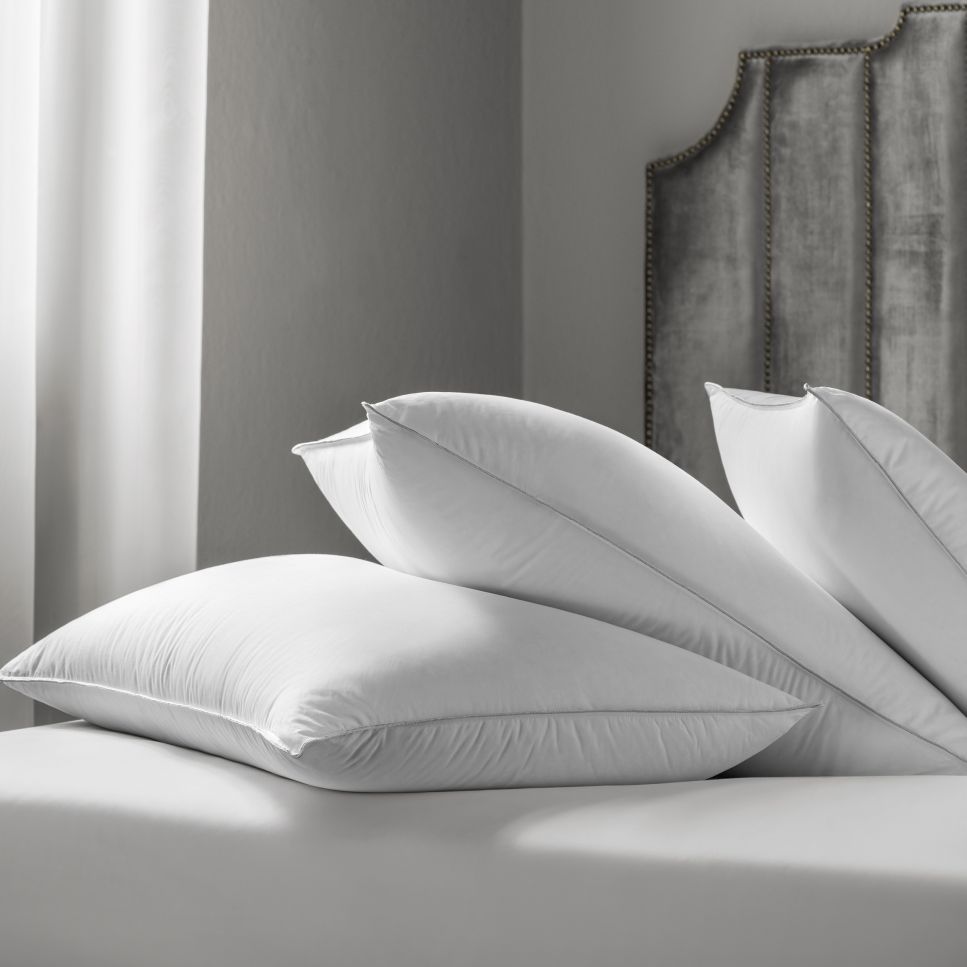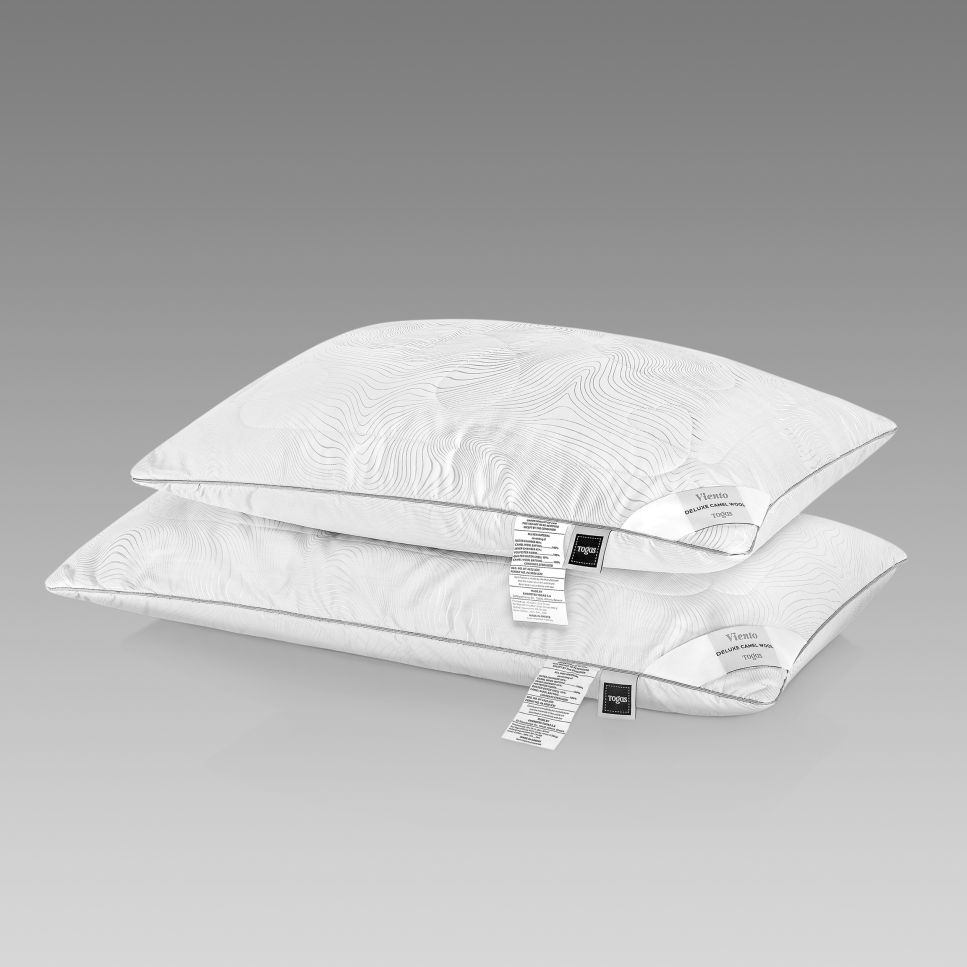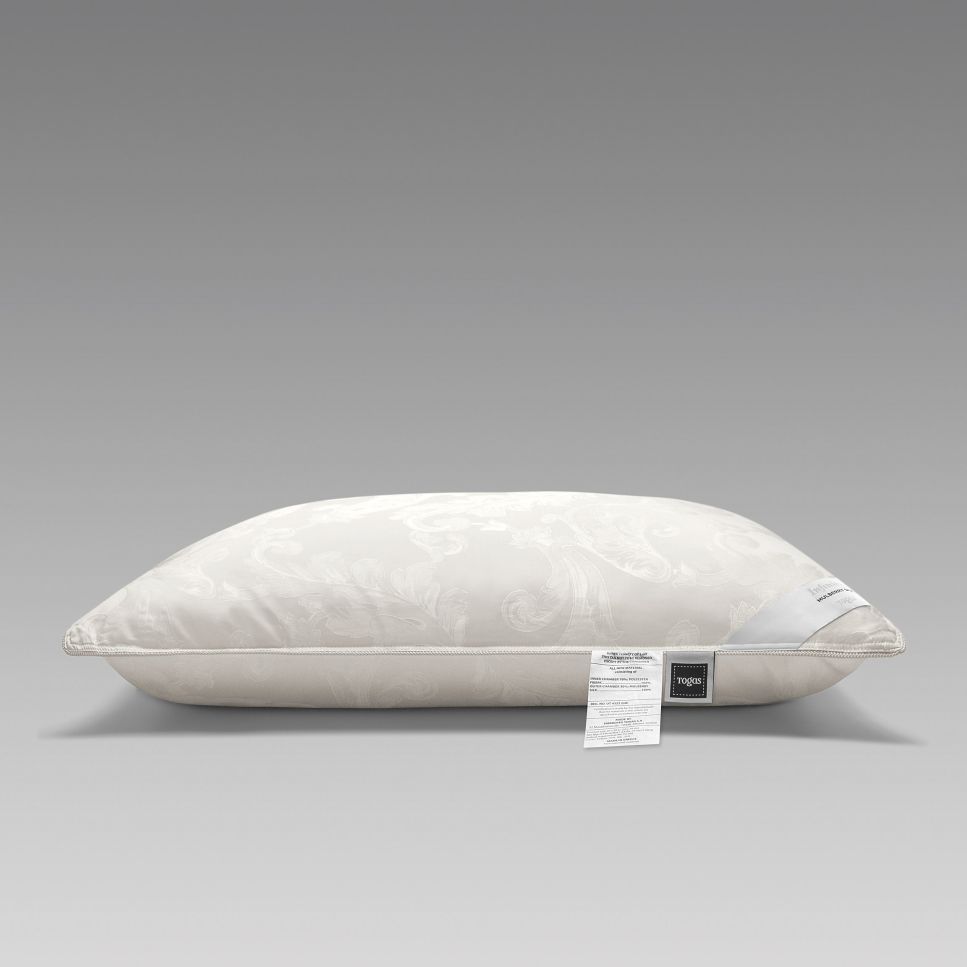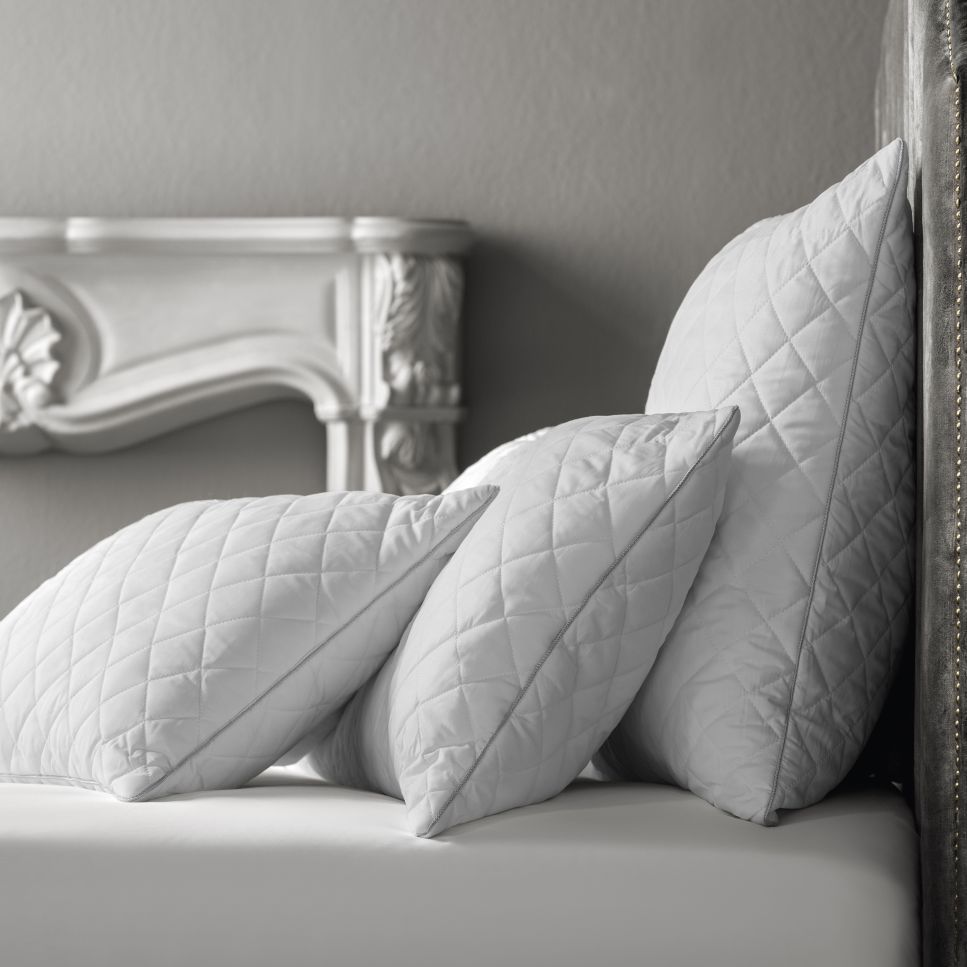How to wash pillows the right way: Tips for washing natural and artificial fills
How to wash pillows the right way: Tips for washing natural and artificial fills
 Pillow ARIA
Pillow ARIA
Pillows are an essential part of our sleep routine. They are designed to ensure comfortable sleep and rest, relieve headaches, and support general well-being and a sense of ease in the morning.
While some people eschew pillows, the majority can’t do without them, and we choose from a large variety of models — tall, firm, soft, low, or anatomically designed. However, proper care is required to retain their shape and keep them clean and fresh as long as possible.
How to wash pillows the right way? Each model, whether it’s made of silk, wool, feather, or artificial fibers, requires individual care. When buying pillows we choose from a variety of fillers and different fabrics for pillowcases.
Some products are meant only for professionals to carry out deep cleaning, while some can be machine washed on a weekly basis.
Can pillows be washed in a washing machine?
You must put the pillows into the machine using a specific method for dealing with heavy goods, such as washing a pillow, to protect your washer. However, the answer to whether pillows can be washed in a washing machine is "it depends."
The best advice is to read the care instructions on each pillow before putting it in the laundry. Most fiberfill, cotton, feather, and down pillows can probably be laundered in a washing machine.
Identify a filler
First, settle on a model. Take into account the following factors before you wash your pillow:
- Natural or artificial fill
- Type of pillowcase fabric
Natural: These are traditional components given to us by nature and used by people over centuries. Mostly it’s bird down or animal wool, both of which are soft and warm. People also employ plant fibers, such as linen or cotton. Natural fillers still enjoy widespread popularity and bring plenty of health benefits.
Modern: Scientific and technological progress has introduced new technologies and materials, including the opportunity to replace down or wool with artificially created fibers that are less expensive. They also have other advantages: for example, such pillows can be washed quite frequently.
Let’s look at the properties of synthetic fibers using the example of microfiber:
- Lightweight, soft
- Very durable
- Cleans well, machine washable
- Doesn’t permit bacteria growth
How to clean pillows made with various fillings
Down
 Pillow KAISER
Pillow KAISER
Many of us love the gentle airiness of down. It feels like a soft, plush cloud of warmth, while at the same time providing proper support to your neck. This is made possible by the orthopedic effect of natural down.
Offering both uncommon species and down pillows made with goose down, the Togas collection is composed of feathers from wild birds like eiderdown and the Canada goose.
How to wash pillows from down? Airy and delicate, the widely beloved down needs special care on a daily basis.
First, be sure you frequently fluff your pillow to add air and break up any clumped-together stuffing. Air it to keep it at a high level of hygiene. Down likes being outside, and should be stored in fabric coverings because it can't stand mustiness and a lack of airflow.
Down pillows shouldn't be washed. Consider hiring a professional cleaner; they will delicately clean your favorite pillow, saving you a ton of time and work.
There is a good likelihood that when you wash feather and down items, they won't dry out. Instead, they will clump, and will still smell musty. The most challenging step when washing down is drying it afterwards.
Wool
 Pillow VIENTO
Pillow VIENTO
Sheep or camel hair is another excellent natural filler frequently used in bed pillows. Wool items are as popular as down ones.
Although woolen pillows are not as fluffy and springy and won't make you feel as though you are sleeping on a cloud, they nonetheless have many beneficial qualities. Wool effectively wicks away excess moisture while allowing air to travel through the material.
Wool filler's exceptional ability to absorb moisture inside provides dry warmth with a therapeutic effect. Sleeping on wool promotes nervous system relaxation, blood circulation improvement, and cold prevention.
Can you wash these pillows in a washing machine? Actually, they typically aren't machine washed. The majority of these items are made by layering the fibers of the filler one layer at a time. There is a good probability that they will clump together after washing, which will cause the wool to distort. Also, they shouldn't be fluffed to prevent the wool from pilling.
If your wool pillows were created using a different method of fiber layering, they can still be washed. Wool can be fashioned into balls for some models, for instance, and won't distort when cleaned by a machine.
Still, professional dry cleaning is your best bet if you need to securely clean and delicately remove dust and stains from a wool cushion.
Silk
 Pillow INFINITY
Pillow INFINITY
Natural silk pillows have smooth silk strands and offer health advantages. Silk has exceptional thermoregulation qualities and can keep your body at a comfortable temperature while you sleep. This organic substance contains proteins, micronutrients, and amino acids, all of which are very beneficial for restorative sleep:
Direct benefits include improved immunity and removal of dead skin cells and hair. Mulberry, Tussah, natural silk, and light down from the exotic ceiba plant are all used to create the silk used in Togas pillows.
These pillows cannot be machine washed since the delicate silk demands sensitive handling. If you machine wash them, your filler's silk fibers may lose their structural integrity. It is advised to use a professional dry cleaner.
Organic fillers
 Pillow SENSOTEX DREAMS
Pillow SENSOTEX DREAMS
This type of filling is created from recycled bamboo or eucalyptus fibers. These natural components make for pillows that have excellent moisture absorption, breathe, and have hypoallergenic properties.
The Togas collection features models with organic fillings derived from bamboo fibers and treated SENSOTEX® eucalyptus fibers.
The maximum temperature for bamboo fillings is 30 °C, as well as for pillows with SENSOTEX® treatment. This high-quality filling is firm and long-lasting. These models have advantages over other models: they are suited to a delicate machine wash as well as manual washing.
Artificial fillers
 Pillow ZEN
Pillow ZEN
The most durable, long-lasting fibers are made by human hands, not by nature. The main benefit of microfiber and other comparable fillings is that high-tech materials are resilient and simple to maintain.
Since they don't collect dust, memory foam pillows can be machine-washed relatively frequently and are just as comfy as ones filled with natural materials. These types of pillows are frequently purchased for kids whose bedding needs continual upkeep.
How do you wash pillows made of microfiber? These products can be wrung out after washing at a temperature of up to 40 °C. Synthetic fiber products dry rapidly, which is really practical if you wish to wash them frequently.
Additionally, they do not alter after washing. Plus, because they are inexpensive, you can replace such pillows for the entire family more frequently, keeping them consistently clean and fresh.
Then there are unique anatomically shaped models. These types of pillows are made to support your head and neck while maintaining perfect alignment of your neck and spine. They lower stress, ease back and neck pain, and lessen discomfort brought on by upper back problems.
If you prefer to sleep on your back or your side, these products are excellent for you. Your head and spine make a straight line when you sleep on your side, which relieves strain on your neck and shoulders. When you're lying on your back, your neck muscles relax and assume the ideal curve for restful sleep.
Can you wash these pillows? While the pillowcase can be machine washed, only dry cleaning by a professional is recommended for memory foam pillows.
Prioritize your comfort and health when replacing your bedding. Make sure your cushion is cozy and smooth to the touch. Still, consider all the available care alternatives for it.
How often should you wash your pillows?
The rest of your bedding should be periodically washed, but pillows can go longer between cleanings. Every six months, all the pillows at a time need to be thoroughly washed. Consider washing your pillows at least every three months or four times a year to guarantee that they always look and feel their best.
Along with routine cleaning, it's a good idea to know when to replace your pillows. Every one to two years, according to Togas, you should replace your pillows. The National Sleep Foundation also supports this period of time, although it's crucial to remember that some types of pillow can last much longer.
The best way to clean pillows
- On pillows for beds, always use a pillowcase. It will be easier to manage allergy reactions to dust mites if you use a zipped pillow cover underneath the pillowcase.
- Pillows should be spot cleaned in between complete washings.
- By sprinkling baking soda on the foam, you can freshen smelly foam cushions. Spray the area with water sparingly and rub the baking soda into it.
- The baking soda can then be removed by vacuuming using the upholstery brush attachment on your vacuum after the pillow has dried.
- Pillows will dry more quickly if you wash them on a sunny, low-humidity day.
- Keep pillows as completely dry as you can to halt the formation of mildew growth. Never leave your hair wet before bed.
How soon should I change my pillow?
Generally speaking, it's advised to replace pillows every one to two years, though it may vary depending on the pillow type and quality, your sleeping patterns, and any allergic reactions you might have.
It's time to get a new pillow if your old one is starting to feel lumpy or flat, or if it's giving you neck pain or discomfort while you're trying to sleep.
FAQ
Is it okay to dry my pillows in the dryer?
Most pillows can go through air drying, but it depends on the material and care instructions of the particular pillow.
While air drying completely may be necessary for foam or latex pillows, low heat settings may be necessary for down and feather pillows. Before placing any pillow in the dryer, always read the care label.
Which is preferable, washing pillows in hot or cold water?
In general, cleaning pillows in hot or cool water is preferable, depending on the type, since it will help to eliminate any bacteria or dust mites that may be present. Check the pillow's label before washing it, though, since some varieties may need warm water or a particular washing technique.
How can I keep my pillows from fading to yellow?
Use pillow protectors or removable covers, wash pillowcases and protectors/covers frequently, avoid eating or drinking in bed, and stay away from strong cleaning agents like liquid soap to keep pillows from turning yellow. Additionally, be sure to properly dry pillows, and swap them out every one to two years.
